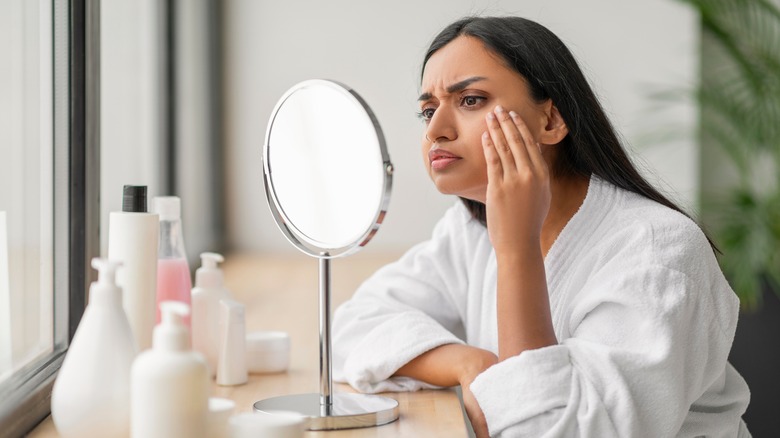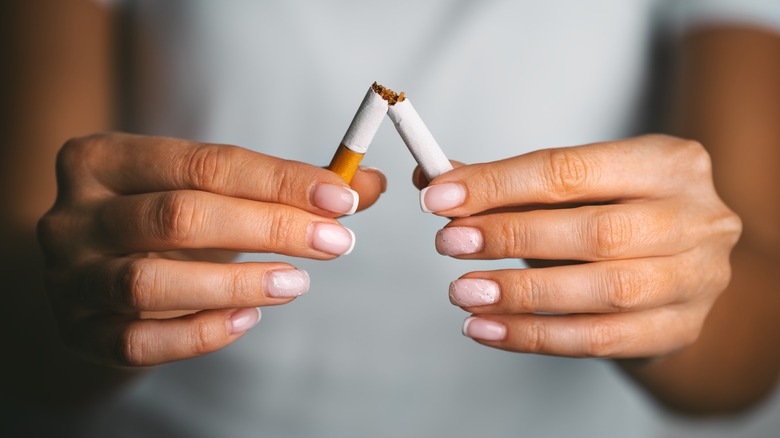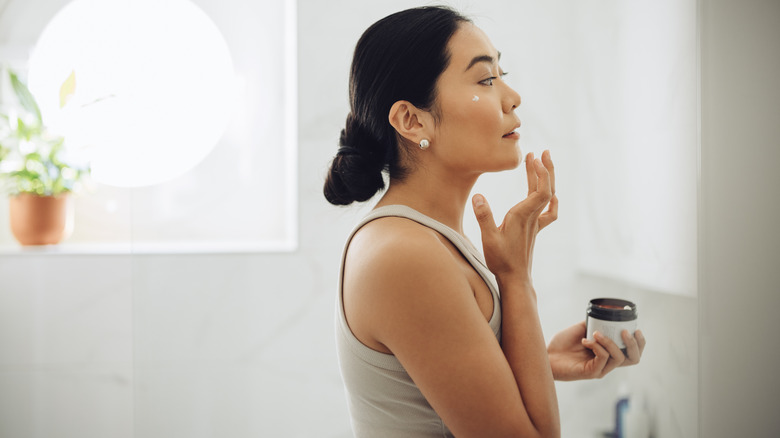Sallow Skin: What Is It, What Causes It, & How Can You Treat It? Our Dermatologist Tells All
It's natural for skin to change color or integrity throughout one's life, but certain shifts in your complexion can be challenging to treat — and this includes sallow skin. A sallow complexion occurs when the skin takes on a yellow or brown hue, which gives the skin a sickly or muted appearance. Sallow skin may also appear dehydrated or gray. Understandably, attempting to conceal skin that has lost its natural glow and plumpness can feel frustrating.
However, rest assured that sallowness is not a lifelong diagnosis. There are many reasons for sallow skin, from lifestyle factors such as smoking to medical conditions such as anemia. In most cases, a sallow look can be addressed with the appropriate treatment. To gain insight on how best to treat and prevent a drab complexion, Glam spoke exclusively to Dr. Jenny Liu, a board-certified dermatologist and Fellow of the American Academy of Dermatology (FAAD), who even provided a great cooking analogy to help people understand sallow skin better.
What causes sallow skin?
According to Dr. Jenny Liu, the direct cause of sallow skin is not fully understood. However, in our exclusive chat, Dr. Liu explained that "[w]e understand glycation of skin and oxidative damage plays a role. I like [to] think of it like browning butter — a similar process is occurring in [the] skin." When you brown butter, you heat it until the water evaporates and the milk solids toast, turning brown. Your skin can do something similar.
Skin glycation is a natural and inevitable process that isn't typically a cause for concern unless it occurs prematurely. Similarly, oxidative stress or damage also contributes to premature aging and can lead to sallow skin. As such, age is a common theme where sallowness is concerned. Dr. Liu also shared that, as we age, our skin experiences "less turnover and that dullness also contributes" to a lackluster complexion.
What's more, anemia is often attributed to sallow skin, as those with anemia struggle to produce enough oxygen, which can lead to pale or yellow skin. Additionally, consuming a nutrient-poor diet can cause sallowness because of potential vitamin deficiencies. In general, unhealthy lifestyle habits — including smoking, inadequate sleep, chronic stress, and dehydration — can result in dull and yellowed skin. In some cases, a poor skincare routine may also be to blame. Due to all the potential culprits, you should consult a dermatologist to help pinpoint the exact cause of your sallow skin.
Treatment and prevention tips for sallow skin
Maintaining a healthy complexion is no easy feat, especially when combating sallow skin. Consulting an expert makes treating sallowness much easier, as they can help you narrow down causes by considering all related symptoms. If your dull complexion is a result of a medical condition, for instance, your doctor can tailor your treatment plan to address the root issue. Or, if poor lifestyle habits such as smoking or sleep deprivation are to blame, seek out the support of a health professional or counselor. In these situations, a sallow complexion is merely a symptom of an underlying issue and cannot be reversed with skincare practices alone.
Sometimes, however, a solid skincare routine is enough to repair your skin. Ask yourself if your current skincare products suit your skin's needs. During our exclusive chat, Dr. Jenny Liu revealed that retinol or products containing alpha-hydroxy acids (AHA) can be used to nurse your skin back to health. Dr. Liu added that "products that improve cellular metabolism like niacinamide" can "possibly" work as well. "And I also love lavender-colored moisturizer and sunscreen," she shared. According to color theory, a purple moisturizer or concealer will neutralize sallow skin, as purple naturally counteracts yellow tones, just as orange counteracts blue, and so on.
Finally, to prevent sallow skin in the first place, Dr. Liu recommended always wearing sun protection and "avoiding excessive sugar intake," as it "contributes to cellular oxidative stress." Ultimately, healing sallow skin requires intervention, as it's unlikely to go away without addressing existing medical conditions or making certain lifestyle changes, so don't be afraid to book that dermatologist appointment you've been thinking about.


